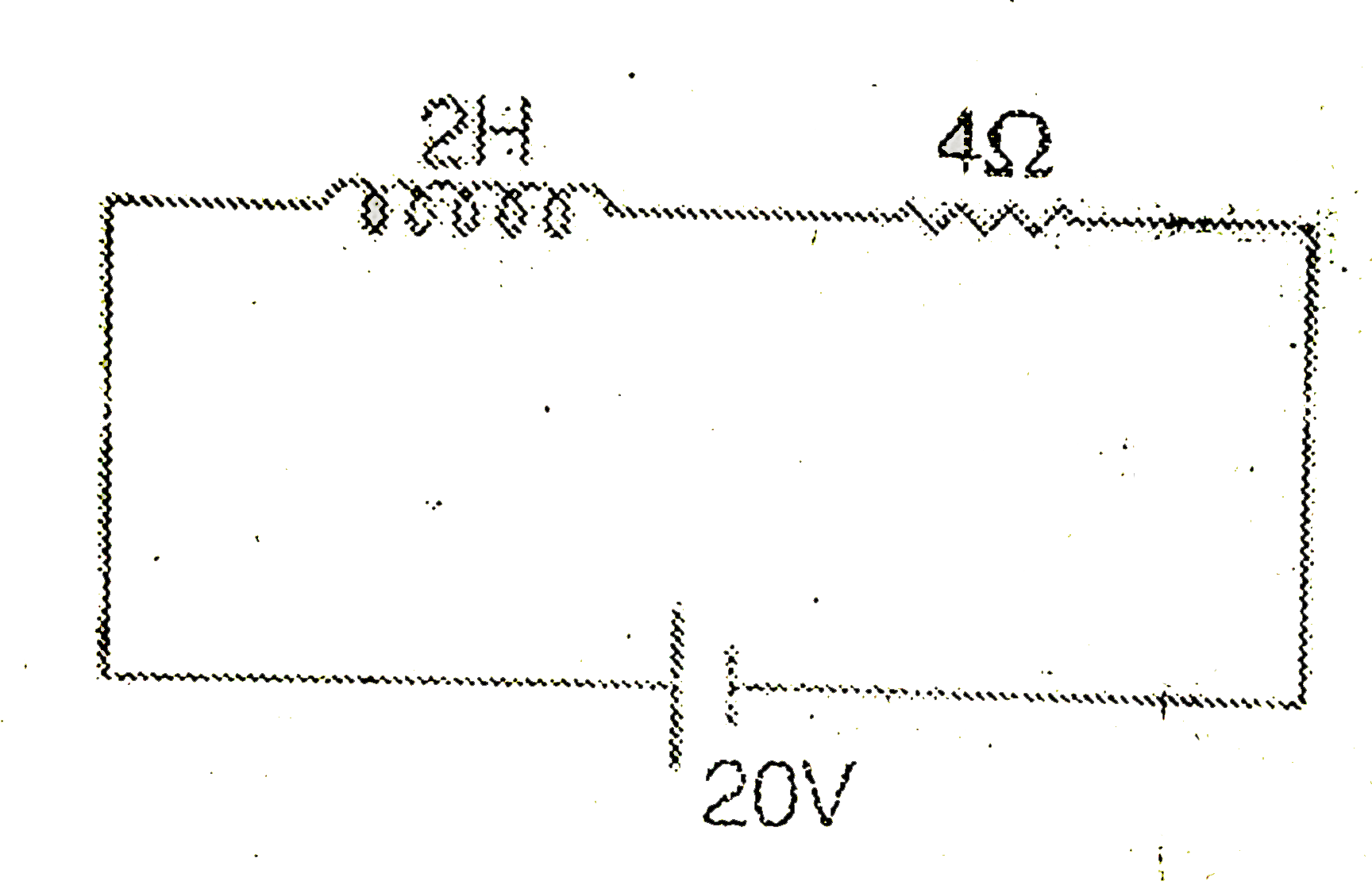In a series L−R circuit, connected with a sinusoidal ac source, the maximum potential difference acrosssd L and R are respectively 3 volts and 4 volts
If the current at this instant is decreasing the magnitude of potential difference at that instant across the ac source is
Increasing
Decreasing
Constant
Cannot be said
The correct Answer is:A
To solve the problem, we need to analyze the behavior of the potential differences in a series L-R circuit connected to an AC source. Given that the maximum potential differences across the inductor (L) and the resistor (R) are 3 volts and 4 volts respectively, we can follow these steps:
1. Identify the Given Values:
- Maximum potential difference across the inductor, VL=3V
- Maximum potential difference across the resistor, VR=4V
2. Understand the Circuit Behavior:
- In a series L-R circuit connected to an AC source, the total potential difference across the circuit is the vector sum of the potential differences across the inductor and the resistor.
- The potential difference across the inductor leads the current by 90 degrees, while the potential difference across the resistor is in phase with the current.
3. Calculate the Total Maximum Potential Difference:
- The total maximum potential difference V across the AC source can be calculated using the Pythagorean theorem:
V=√V2L+V2R
- Substituting the values:
V=√(3V)2+(4V)2=√9+16=√25=5V
4. Consider the Current Behavior:
- The problem states that the current at this instant is decreasing. This means that the rate of change of current dIdt is negative.
- The potential difference across the inductor is given by VL=LdIdt. Since dIdt is negative, VL will also be negative, indicating that the inductor is opposing the decrease in current.
5. Determine the Instantaneous Voltage Across the AC Source:
- Since the current is decreasing, the inductor's potential difference VL will contribute positively to the total voltage across the AC source.
- Therefore, at this instant, the total potential difference across the AC source remains at its maximum value, which we calculated as 5 volts.
Final Answer:
The magnitude of the potential difference at that instant across the AC source is 5 volts.
- Maximum potential difference across the inductor, VL=3V
- Maximum potential difference across the resistor, VR=4V
- In a series L-R circuit connected to an AC source, the total potential difference across the circuit is the vector sum of the potential differences across the inductor and the resistor.
- The potential difference across the inductor leads the current by 90 degrees, while the potential difference across the resistor is in phase with the current.
- The total maximum potential difference V across the AC source can be calculated using the Pythagorean theorem:
V=√V2L+V2R
- Substituting the values:
V=√(3V)2+(4V)2=√9+16=√25=5V
- The problem states that the current at this instant is decreasing. This means that the rate of change of current dIdt is negative.
- The potential difference across the inductor is given by VL=LdIdt. Since dIdt is negative, VL will also be negative, indicating that the inductor is opposing the decrease in current.
- Since the current is decreasing, the inductor's potential difference VL will contribute positively to the total voltage across the AC source.
- Therefore, at this instant, the total potential difference across the AC source remains at its maximum value, which we calculated as 5 volts.
The magnitude of the potential difference at that instant across the AC source is 5 volts.
Topper's Solved these Questions
- ALTERNATING CURRENTBOOK - CENGAGE PHYSICS ENGLISHCHAPTER - ALTERNATING CURRENTEXERCISE - Single Correct
10 Videos
- ALTERNATING CURRENTBOOK - CENGAGE PHYSICS ENGLISHCHAPTER - ALTERNATING CURRENTEXERCISE - Single Correct Asnwer Type
27 Videos
- ATOMIC PHYSICSBOOK - CENGAGE PHYSICS ENGLISHCHAPTER - ATOMIC PHYSICSEXERCISE - ddp.4.3
15 Videos
Similar Questions
In a series L−R circuit, connected with a sinusoidal ac source, the maximum potential difference acrosssd L and R are respectively 3 volts and 4 volts
At the same instant, the magnitude of the potential difference in volt, across the ac source will be
View SolutionIn a series L-R circuit, connected with a sinusoidal ac source, the maximum potential difference across L and R are respectivaly 3 volts and 4 volts.
At an instant the potemtial difference across resistor is 2 volts. The potential difference in volt, across the inductor at the same instant will be:
View SolutionIn L−C−R series AC circuit,
View SolutionAn L-C-R series circuit , connected to a source E, is at resonance. Then,
View SolutionIn an L-C-R series, AC circuit at resonance
View SolutionA capacitor (C) and a resistor (R) are connected in series with an a.c, source of voltage of frequency 50 Hz. The potential difference across C and R are respectively 120 V and 90 V. The current in the circuit is 3A. Calculate () impedance of the circuit, (i) value of the inductance which when connected in series with Cand R will make the power fador of the circuit unity.
View SolutionA capacitor in an LC oscillation has a maximum potential difference of 1.5 and a maximum energy 360μJ. At a certain instant the energy in the capacitor is 40μJ, the potential difference across the capacitor is V volt?
View SolutionIn a series L.C.R. circuit, the potential drop across L, C and R respectively are 40V, 120V and 60V . Them the source voltage is
View SolutionIn the L-R circuit as shown in figure, potential difference across the resistance at some instant is 4 V. Then

View SolutionIn series LCR AC circuit, the voltage of the source at any instant is equal to
View Solution
